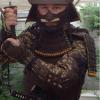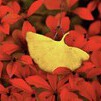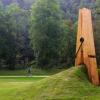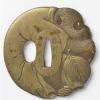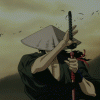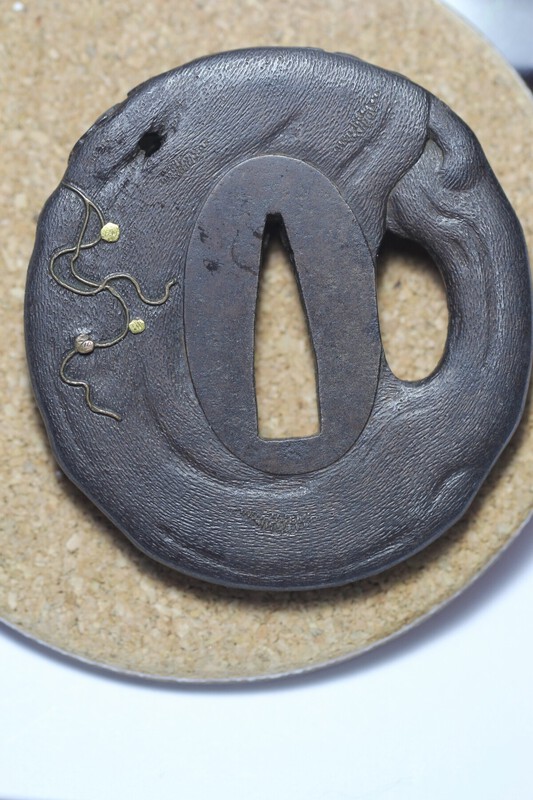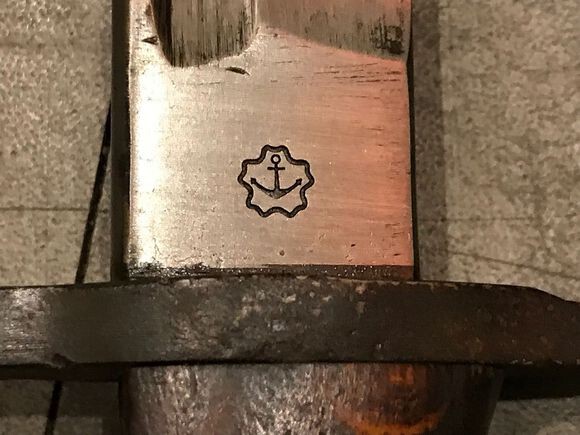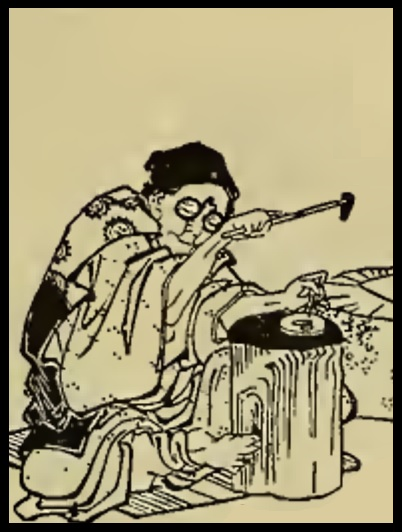Leaderboard
Popular Content
Showing content with the highest reputation on 12/10/2021 in all areas
-
Hi all. Picked this up today for A$1300. Leather bound saya, looks to be original tassel, and a family mon. The blade is an older one with bohi and a folded over mei the correct term escapes me. It is signed SUKESADA. Blade is waki size at 55.5cm. It has a pierced tsuba with a leather retainer strap. Has anyone seen this before ? any guesses on possible age ?6 points
-
The results for Jūyō 67 just came online. https://www.touken.or.jp/Portals/0/第67回重要刀剣等指定品発表.pdf Another very interesting session with lot to think about. Of course lot of wondering on my part as not having info or pictures of the items. I was very excited to see two Ōdachi in this session as they are incredibly rare. I believe these ones Morimitsu & Masaie are in the collection of Yasukuni Jinja. Both were previously unknown to me and seem to be longest examples by each ot the smiths that I am aware of. I did the swords in similar format as I've done before for my index and eventually when I have time for all the non-blade items I will update that to include the most recent results. Jūyō 67 swords.docx5 points
-
I just love how powerfully this strikes you!!! Ha! I laughed in delight and still am smiling as I write this! It is the joy of our collecting that makes it all so fun. Go for it man!3 points
-
All, I asked Brian to upload an article titled “Swords of the Tea Masters” in pdf format. It was in a periodical called “Chanoyu Quarterly” which is now out of print. While not in-depth Nihonto info and written more for a tea ceremony practitioner audience, some might still enjoy the read. You will find it in the ‘download’ section. Hope you will find it interesting. Mark S.2 points
-
Looks to me like "Seki Kanemune" but I'm quite often wrong on smith names! http://japaneseswordindex.com/oshigata/kanemun2.jpg The small stamp at the top is the "Showa" stamp. You find these on blades predominantly made in 1940-41, although the stamp has been found throughout the span of WWII. The painted numbers "69" are normallyfrom the fittings shops and match numbers on the fittings, but these fittings are civil with a wooden saya made with a leather cover (which often goes missing over the years), so you might not see other numbers on these fittings.2 points
-
Hi Darius, saw you post yesterday and it was still in my inbox today and I note there are no replies. I will take a wild guess and say the reason for that is that this is primarily a Nihonto sword forum as distinct from bayonets. While I'm sure some NMB members would have touched on bayonets over the years, there would be more appropriate forums, specific to bayonets, with members who have the interest and expertise to answer your questions. I'm not speaking on behalf of the NMB, its just my view and if I am wrong...I will hear about it soon enough All the best Rob2 points
-
I posted my thanks on the download page, but to reiterate - I really appreciate your article post. We spend a lot of time on the mechanics of our collecting, but what I love is when we get the smallest of glimpses into the real people and lives that these blades came from. This article has several stories (real and legendary) of the people involved around these blades, each one worthy of a book and/or movie in everything human - pain, dedication, loss, sacrifice, honor... the list goes on. I love these peeks into the history these blades came from!2 points
-
I have only one Kaigunto for all my years of collecting and it has a mon on one of the menuki. The other menuki has been swindled out so I cannot comment on that one. There is also a stamp on the seppa against the habaki that I'll include here for interest. I'll post the entire sword and suite of photos in the "Show us your high quality gunto" thread when I can find the right Round Tuit. BaZZa.2 points
-
Hi everyone, I wanted to give a quick introduction as this new dealer page is set up (and appreciation to Brian for creating this new area and all he does to manage this board). Some of you know me from discussions here on the NMB, as well as Facebook, YouTube and Instagram. I have been collecting and studying Japanese swords now for 32 years. As a collector, I primarily focus on koto blades (with a preference for Soshu and Yamashiro) but all time periods are interesting to me and one of the reasons that I branched out into sales is that I enjoy handling a large number of swords to research, study and learn from. My swords sales are almost exclusively consigned from other collectors (most from our community here), and I am happy to consider new pieces to receive for consignment. I also enjoy assisting with research & translation requests. I am no Markus Sesko, but I do my best. Here are a few links to my pages online. Website: http://www.swordsofjapan.com YouTube: https://www.youtube.com/@swordsofjapan Instagram: https://www.instagram.com/swordsofjapan Please feel free to reach out any time there is something I can help with, either through NMB messenger or (preferred) by email at raymondsinger@gmail.com. Best regards, Ray1 point
-
Hello fellow board members! I am writing this post to inform you all of the formation of the Indiana Token Kai. Our basic charter is as follows, and includes membership requirements. Indiana Token Kai Purpose Statement The Indiana Token Kai is an organization: For the appreciation, study, and preservation of antique Japanese swords and related items To provide knowledge sharing and educational opportunities for members and the general public To conduct monthly sword-appreciation meetings Membership requirements Members should: Show a general respect and appreciation of Nihonto Be at least 18 years of age Understand and follow Nihonto etiquette; see https://swordsofjapan.com/nihonto-library/nbthk-etiquette/ If you wish to join, please email me directly or message me here on the NMB. We are small but meet quarterly/to monthly (as time and situation warrants). We do mask up and follow proper procedures to ensure members' healthy and safety. We have a modest collection of texts and nihonto and conduct study and appreciation time during said meetings. Our first meeting was fantastic and I encourage others to come. We welcome people of all stripes and paths of life and are a friendly lot, so don't be shy! ~Chris, Co-Founder of ITK1 point
-
Bob, both are nice TSUBA, but I like the AKASAKA very much! What you see as a 'tiger tail' on the HIRADO TSUBA is possibly the dragon's tail shown from the underside with the ventral scales. Have you never had the occasion to look under a dragon's tail?1 point
-
Dear Chris, I am a Nihonto student living in Ohio. I am looking to join a local club to meet with other Nihonto collectors and studying Nihonto together in person. It seems most of the local Nihonto clubs are all located in the west coast. And I don't know if we have a serious Nihonto club in Ohio. Driving to indiana seems ok for me, definitely better than a trip between California and Ohio. LOL Is your sword club associated with the NBTHK US branch? The swords that you guys have for the previous meeting seem very attractive to me. I hope I may have the chance to join you guys in yours future meeting Thank you very much! AL1 point
-
Item No. 172 Iron Tsuba 7.48 cm x 7.02 cm x 0.67 cm Subject of Four Seasons - Akasaka possibly mid to late 18th cent. Nice subject , good condition with deep even patina NBTHK papered Item No. 173 Brass Tsuba with gold highlights 7.30 cm x 6.83 cm x 0.50 cm Subject of dragon in clouds , signed by Hirado Kunishige? with kao. Heavy piece with good carving and detailing. The segment of scaled dragon tail shown on the reverse looks almost silver against the brass background. Also there is what at first looks like a tigers tail included in the image , but this must be from the dragon ? is it another allusion to the relationship between dragons and tigers ? Any help pinpointing the likely age of this would be gratefully received - is the artist from Hizen ?1 point
-
Dear Chris. I would be thrilled to bits if I had found this! Time to go carefully with this one. If you look at the orikaeshi mei you can, I think, see the small gap under the fold where the original mei was carefully thinned, folded over and inlaid on the other side of the nakago. This looks right. Just on the edge of the fold I think I can see what is left of the original mekugi ana. If so then with a bit of approximation you should be able to work out what the original nagasa of this blade was, that's going to matter for a time period. If you can take a better photo of the mei and move it to the Nihonto section I'm sure you will get a ton off feedback. Looks like Sukesada to me. Just for starters we seem to have a rather short katana with narrow shinogi and an o kissaki, the hi run past the yokote, all of which suggest a Koto blade. If I am seeing straight, (more of a challenge than I care to admit!) this was signed as a katana and depending on the length might indicate late Koto. The other, slightly less likely from my point of view is Nambokucho but the rest of the sugata and the mei, combined with the modest length tends to rule this last idea out. Oh, and the leather retainer through the tsuba is not uncommon, especially for swords which were originally intended to have a combat cover.. Looking forward to where this is going! All the best. P.S. I just converted that price into Sterling, can you hear the sound of groaning from where you are?1 point
-
The site below says 22 degrees celsius (71.6 F) is the optimum temperature for swords with lacquer koshirae. Actually it says this is the temperature at which museums keep their swords (no other details on how they determined this). https://note.com/katana_case_shi/n/n8415e481dd591 point
-
Chris I know how you feel about spending a lot on accoutrements which could be put away to accumulate to a new sword But just my two cents, I would Never put a Repo anything on a original sword. For me it always sends up a red flag of what else is not right or fake. I would rather my swords have no tassel, which is perfectly ok, than be anywhere near a fake one. Your decision, your sword. MikeR1 point
-
Good evening everyone, I suppose this is the right place, though its not because its for sale I feel like writing this. I've been looking at this naginata for a couple weeks now. The sugata of this sword, its atmosphere, is just awe inspiring. I sit behind my monitor with my jaw hanging, nearly drooling over my desk. This naginata (Tokubetsu Juyo and I'm not even thinking twice on why (leading to wondering how many naginata even went beyond Juyo)), is one wicked piece. I mean - look! It leaves me awestruck - https://www.nipponto.co.jp/swords/JT988980.htm1 point
-
1 point
-
Xmas discount: #1 - Mokko gata iron tsuba with shakudo inlays and nunome zogan - Umetada school style - 7,5 cm * 7 cm - 300 euros ==> 280 euros ($320) #2 - Maru gata iron sukashi tsuba - Signed Echizen ju Kinai saku (faint) - Design of geese - 7 cm * 6,8 cm - 250 euros==> 230 euros ($260) #3 - Maru gata iron tsuba with shakudo mimi - Water wheel design with raised leaves - 8 cm * 8 cm - 275 euros ==> 250 euros ($285) #4 - Maru gata iron sukashi tsuba - Design of Kiri mon and tea pot handles (Cha Do) - 7,8 cm * 7, 8 cm - 300 euros ==> 280 euros ($320) #5 - Maru Gata suaka tsuba with shakudo mimi - Kata kiri of peonies and Shishi dog - 8 cm * 8 cm - 350 euros ==> 300 euros ($340) + Shipping & Paypal fees1 point
-
1 point
-
You can search this forum, though, for some good tips on how to get that old cosmoline off. Just search "remove cosmoline" or click HERE.1 point
-
Robin is right, better off asking on one of the other militaria specific forums: https://www.wehrmacht-awards.com/forums/forum/ken-jasper-international-militaria-forums/Japanese-militaria-forum https://www.warrelics.eu/forum/Japanese-militaria/1 point
-
Thankfully your suggestions matched what I was thinking. Tonight I was able to slowly dremel the rivet head and push it out with a nail punch. Full disclosure, with my excitement I've done zero research and this one is quite different. There appears to be a stamp above the mekugi. Below it is the following kanji which was difficult to get a decent picture. Lastly the other side appears painted instead of any inscription. The rust is noticeably different also. For the don't rush polishing advise, I definitely get it as there's so much to learn. I imagine I'm slightly overprotective in wanting to immediately stop any rust/degradation of the sword. It took a long time to come into my possession.. I was fortunate however to meet another member of this community who cleaned them with alcohol and applied Choji oil. Thanks again for your assistance1 point
-
I have seen and handle such naginata at one of my friend’s home it is now in Gordon Robson’s collection, very long and expensive, end of Muromachi, Mino - Kanabo school.1 point
-
Ok. Opinions differ. To me it's like seeing a Momoyama period tea bowl. Something about such artefacts gives me a certain feeling, an impression that brings me to a certain headspace. They speak for themselves. I do agree the photography is, for lack of a better term, lifeless or 'flat'. Some sites these days brought up the standard and it is such a major difference that photos like these are not even in the same league. This naginata still speaks to me though. Just magnificent 🤤 Edit: unrelated but I think very much worth sharing as I think it's quite a great tool, nifty?1 point
-
1 point
-
There is a club in Toronto at the Japanese Canadian Cultural Centre, where we have meetings. Whenever, I see a Canadian on nmb I send them a pm providing some information on the club. If they show interest I add them to our email list. I also send them some recent emails sent to members. At our first meeting since the start of the pandemic we had two new file come to the meeting.1 point
-
i wrote them, it is casting s**t , not silver, not edo, NO ANSWER Thomas Del Mar Ltd, London, United Kingdom= BIG s**t1 point
-
The son and successor to 正次 was 正幸 who made swords in Kyōto until WWII. (?) http://www.mus-his.city.osaka.jp/education/publication/kenkyukiyo/pdf/no13/BOMH13_11.pdf1 point
-
Item No. 160 - Iron Tsuba 7.46 cm dia x 0.58 cm Subject of lobster or crayfish ? signed Yamashiro Tadatsugu - could anyone please verify this and also age - looks maybe late edo . When I look up the name on google , there are various references , some to sword makers , others to tsuba and one to a Christies auction in 2001 for a smaller tsuba by Yamashiro Tadatsugu from back in the 17th cent - cannot see an illustration , though . Could it be the same maker ? Striking piece with good , almost black , wet look patina . Cannot find any reference to this artist - maybe Haynes has an entry ? Perhaps caused by an over active imagination after too much coffee , the rear of the tsuba reminds me of the 'face hugger ' from Alien - maybe an early example of Manga in a Tsuba ?1 point
-
Item No. 157 Copper Tsuba with Silver , Copper , Shakudo and Gold details 7.00 cm x 6.40 cm x 0.40 cm Subject of Bushi entering a room with screens . Pine tree on reverse Hamano School ( Hamano - Masazui ? ) signed Masaaki with kao - Is this Furukawa Masaaki ? Mid 19th cent. Delicately carved and realistically expressed - nice detailing on the screens , featuring Bamboo . Typical good hamano pine tree on reverse. Bought off ebay from Japan nearly 16 years ago.1 point
-
Item No. 155 Menuki Shakudo with silver, gold and copper Subject of rats on dried salmon , signed Haruaki Very fine detailing , as you would expect from Haruaki School - it is even possible to see the Salmons' individual teeth ! An almost identical pair ( maybe the same ones ) were in the Hartman Collection and appear in the auction catalogue on page 122 , item 488 . I am not sure if these are the same menuki that were in his collection as I bought them from a dealer in Japan about nine years ago . That said , the Hartman collection was auctioned at the end of June 1976 and it is quite possible that they went back to Japan , only to come back to England ' on vacation '.1 point
-
Item No. 150 Iron tsuba 8.2 cm x 7.7 cm x 0.36 cm Subject of dragonfly with water and reeds on rear , carved in katakiri bori , signed Myochin motte kitao A wonderful piece of carving. The corrosion spots are well in excess of 100 years old - this piece formed part of the Red Cross exhibition of 1915 , and the image from the record of that exhibition shows the spots. Provenence - Ex. Colonel J B Gaskell collection Exhibited Red Cross exhibiton 1915 Published - Japanese Art and Handicraft by Henri L. Joly, pp 112 , no. 481 point
-
Item No. 119 Iron Tsuba with details in gold , shibuichi , copper and silver 7.82 cm x 7.24 cm x 0.55 cm Subject of Eagle and Monkey signed Hiroyoshi ( Mito school ) The artist was part of the Tamagawa & Uchikoshi branch of Mito . He had family name of Marukawa and worked in the 1st half of the 19th cent. c.1840's. Haynes H01449.0 The swooping eagle's beak has taken a bit of a knock and needs redefining - nothing major ( perhaps as a result of drunk diving ) , otherwise a piece in nice condition . Part of an auction lot about five years ago.1 point
-
Item no. 109 - Iron Tsuba 6.96 cm x 6.64 cm x 0.58 cm Subject of single dragon rising through water and clouds with Udenuki-ana. Remains of a signature - age and school unknown. Acquired as part of a collection Item No. 110 - Iron Tsuba 8.49 cm x 8.29 cm x 0.48 cm on plain , 0.83 cm over pattern Subject of a pair ( male & female ) dragons by Masatsune? Bushu Ito school , late 18th cent. Large tsuba that appears to have been carved from a single piece of iron . Great patina and general condition.1 point
-
Item No. 108 - Iron Tsuba with gold 76.9 cm x 7.12 cm x 0.56 cm Subject of peony and shi-shi in sunken relief cave or caverns. Signed Yoshihiro- age unknown. Could this Yoshihiro be from the Myochin lineage ? If so it would be of considerable age but somehow it feels younger in the hand. High grade workmanship all round with painstaking details on the rock carving and a highly animated shi-shi almost leaping free from the plate. The peony, eye and bud appear to have been carved from solid gold . The plate itself showing pleasing grain structure , not untypical of Myochin , hence the question above regarding artist school. As usual , any comments , help or corrections gratefully received.1 point
-
@PNSSHOGUN I thought you might enjoy this little tidbit about the prescribed location of mons 紋 on Type 97s. Launch documentation for the 1937 introduction of the new Navy Gunto, Post #251 point
-
Anyway , back to the work in hand - Item No. 90 Iron Tsuba in kakugata shape 7.12 cm x 7.00 cm x 0.46 cm Raimon ? Sukashi signed indistinctly Kofu ju Masatomo + kao Simple almost austere design , competently handled . Can Haynes or Wakayama throw any light on to which school / generation this Masatomo belongs to ? Purchased from Japan 9 years ago.1 point
-
Item No. 89 - Kozuka in shibuichi , with gold , copper and shakudo Subject of a Nio temple guardian in typical pose , signed Katsuhira A well crafted kozuka featuring a ferocious Nio warding off evil spirits . The nanako in regular pattern and spacing , the inlays ( including the teeth ! ) all well executed. Tree engraved to rear. Bought from auction about seven years ago.1 point
-
Item No. 67 - Iron Tsuba with gold and copper details 6.33 cm x 5.93 cm x 0.54-0.96 cm Subject of wasp emerging from cavity in tree - unsigned , thought to be Nara school - any ideas ? Beautifully detailed piece , texturing on tree bark is particularly well done. Bought from an American dealer 10-12 years ago.1 point
-
Item No. 66 - Kozuka in shakudo and gold with copper and silver Subject - New Year with a Buriburi on wheels and wakamisu scene on reverse ( first drawn water of New Year ) Superior quality all round with miniature nanako , inlays on the Buriburi etc. Signed Akichika , with kao ( Kono school ) - as a student of Haruaki Hogen ( famed for his incredible attention to detail ) the level of workmanship is , perhaps , not surprising. From a European auction about 4 years ago Scale on close up pictures of nanako is in millimetres1 point
-
1 point
-
Item No. 51 Tsba in Shibuici with gold, silver and shakudo detailing 7.64 cm x 7.53 cm x 0.49 cm Two butterflies , three spiders webs and large dragonfly on a fine Ishime ground. Signed Nara Tadashige and Jochiku with a kao . This is therefore a dai-saku work from the Nara and Murakami Schools from the 19th cent. Looks considerably better in hand than in photographs - the very fine Ishime giving a matt surface finish , very evenly applied . The webs glow and almost jump out from the tsuba in the right light and the detailing on the insects is very well done. Just as a bonus , the dragonfly's eyes are inlaid with a striking green iridescent mother of pearl/ abalone , that really stand out . Have been unable to place Nara Tadashige - does not appear to be shown in the genealogies book . Also there are two artists shown as signing Jochiku in the Murakami school.... Any Haynes or Wakayama references would , as usual , be much appreciated.1 point
-
The concept of the Gokaden was, if I'm not mistaken, developed in the 19th century as a way to classify Koto sword smithing. A smith working during Koto times didn't know he was part of 1 of 5 different traditions. And then when Tokugawa Iyeyasu came to power and unified Japan under one government late in the 16th century, he shuffled the country. He realized that if he left Japan as it was, feudal Daimyo who hadn't been as supportive as he would have liked would retain their positions of power with armies, alliances, suppliers, and more, and could be troublesome. So he moved them around, forcing Daimyo who had existed for centuries in one spot to relocate to another. When the Daimyo, who were important customers for swordsmiths moved, many smiths moved as well. This disrupted traditions and forged new alliances in smithing: lots changed. Also, with the unified country and a near total cessation of warfare, swords took on a different significance. They had always been weapons and the best of them were objects of status but, in Shinto, status became more important; swords were made as much to be items that would impress the owners' associates as to be impressive weapons. New styles and techniques developed; there was a significant shift away from tradition. All of which is to explain why you can't easily draw lines from Koto into Shinto. And let me add, This is my understanding but I'm not a historian. I may have this wrong and if I do I hope I will be corrected. Grey1 point
-
1 point
-
1 point
-
On another board I kept reading things like "the mum has gone...". It took a little while to realise "mum" was shorthand for chrysanthemum... "Mum" is also the Australian equivalent of the USA "Mom". BaZZa.1 point
-
It was actually the other way round, as I understand it! After the Meiji restoration the Navy was the senior service and got a lot of old samurai family recruits. The early Imperial army was actually used to suppress the samurai .1 point
-
0 points



